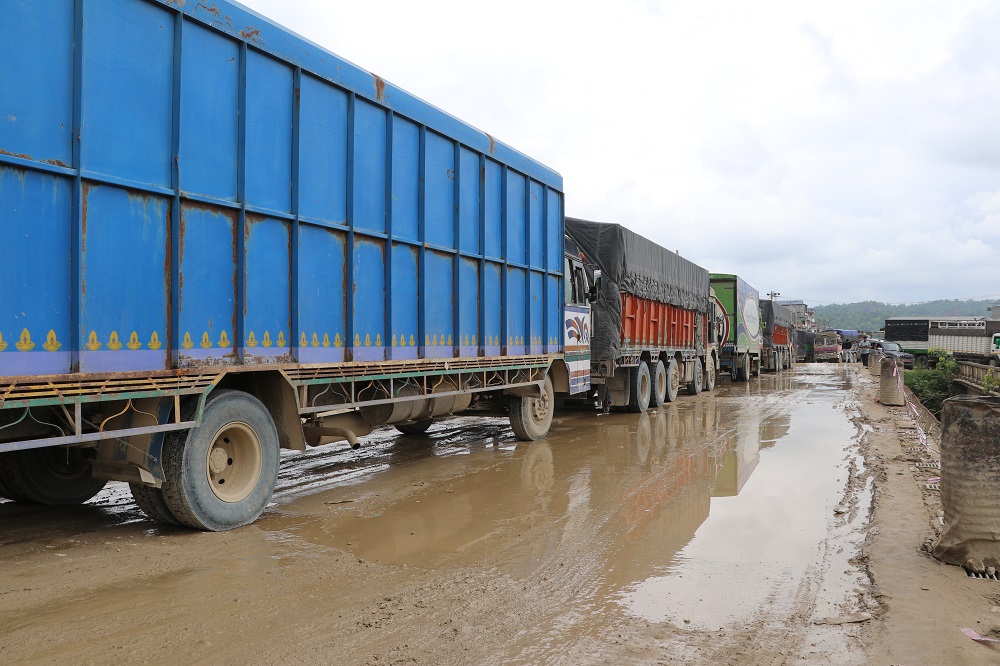Well, our rulers have been building the nation for ages. Everyone who came before did construct something. The nation is constantly being built—sometimes by digging, sometimes by demolishing and most of the times, by selling dreams. It seems it is less of a nation and more of a never-ending construction site—with no deadline and infinite budget leaks.
One ruler declared, “I will take the nation up to Asian standards.”
Then came another: “I’ll make it like Singapore in five years.”
Then came a more revolutionary one: “I’ll turn it into Switzerland.”
The next promised, “I’ll make it a heaven in 10 years.”
If dreams were buildings, we would already have a skyline! Some became immortal in history simply by selling dreams that never needed to come true.
First came the Shah kings who said, “I will build the nation”. And so palaces were built. Forts were erected. And citizens were created too—excellent beings who paid taxes, bowed their heads and never asked questions.
They were like WiFi routers—always connected, never resisting.
Then came the Ranas. They broadened the scope of nation-building—by distributing the whole country among their relatives. They took the idea of state-building to new heights. They built new palaces and new decorated gardens. They even sent the news of roads that were not built to Nepalis who had gone abroad to become doctors and engineers. The nation's wealth overflowed and poured into foreign lands!
Then the Congress party mingled with the Ranas. The King joined in too. But in the end they only agreed to disagree! Then elections were held and Congress took power. It seemed like they would do something remarkable—but suddenly the King removed them. The King launched a new version of the “golden dream” for both the state and the people. He did not just repaint the palace, but also dissolved the old constitution and began turning everything into an extension of the palace. Congress and the Communists went underground. Apparently, dreams grow better in the dark!
Then came multiparty democracy. Congress came. UML came. Other communist factions came. And they “built” the people—into quarrelsome beings, election enthusiasts and free citizens, who could queue up, get shoved, wave flags, swing sticks and shout slogans. What a massive contribution! We finally had freedom—to riot for our favorite dysfunction. Nation-building became more organized. Party committees formed in every village. Factions formed in every intersection. Old palaces got a new coat of paint. And the campaign of nation-building came alive again.
A new national directive emerged: “Dream dreams, raise the flags of dreams and sell dreams.” Some burnt yesterday’s dreams and launched new dreams for today. The ideology of the "people’s democracy" came, followed by factionalism, followed by division and thus the grand saga of nation-building marched on. Even confusion had an organizational structure. The factories that manufactured dreams never shut down.
Then came the Maoist comrades. They brought a new slogan: “You cannot build a new nation without destroying anything and everything that came before!” They demolished village rest stops and community shelters. Then they sat on those very ruins and delivered ambitious blueprints of future palaces. Nothing says progress like a speech on a pile of rubble! Then they realized—perhaps those old shelters had offered shade and peace after all—and proposed building new ones. Such a beautiful cycle of construction– destruction– reconstruction is rarely found anywhere else in the world!
Then the new generation planted the seedling of reason in the national garden. New parties emerged—like Bibeksheel and Sajha. They claimed to bring fresh ideas and clean politics. But the task of building the nation remained confined to Facebook reactions and shares. Facebook posts were created, dreams were “saved”. The nation itself was left in “draft”, with plans to “upload” it later. We had likes, comments and zero infrastructure. A truly digital democracy!
Now, yet another group has arrived, calling themselves a new force—the RSP. There is enthusiasm, there is passion and the dreams are even lighter than air. They float so high, even gravity gave up! The party’s leader appeared in Tundikhel like Hanuman, declaring he would break the ridges of the politicians’ noses. But as soon as he arrived, he landed in jail and now fights to protect his own nose. It turns out that perhaps the revolution was allergic to handcuffs! So, the nation-building program is currently operating from behind bars. True leaders build nations wherever they may be—even in jail!
Thus, kings came and went. Ranas rose and fell. Congress crashed. UML split. Maoists crawled. Alternatives collapsed. Independents were jailed. Royalists have started muttering again. A new era has dawned in the country. But, please don’t ask what the people got? We got flags, slogans and a front-row seat to history—with no popcorn!
Cities across the country, including Kathmandu, are becoming smart cities. Our dreams are already smart. Every one of our rulers has contributed to nation-building in their own unique way. Some draw maps, some design bridges, some construct towers of dreams. Meanwhile, our poor roads play in the traffic, bathe in potholes and swim through fate. Even Google Maps needs therapy here. A new theory has emerged: “Potholes also enhance the natural beauty of a country!” Where else can you find such an innovative explanation of nation-building?
So, when elections come, when leaders deliver speeches, when shiny posters of plans are plastered on walls, we must understand—nation-building is ongoing. And hope, like the posters, is weatherproof until it rains!
Leaders are busy visiting foreign countries to build the nation. Ministers are signing MoUs to build the nation. Contractors are pouring cement, gravel, sand and water into stranded projects to build the nation. Social workers have even launched online portals and YouTube channels to help build the nation. We are building the nation in every possible dimension—except the ground.
We are lucky. We have tireless rulers who, each day, add a new brick of cheap hope to the country. This remarkable and unfinished journey of construction is still moving forward with great enthusiasm. Of course, it takes time to build a nation. Rome wasn’t built in a day—but at least it was built!
So what if it has already been 250 years? Let it take 2,500 years more—our patience is immense. We are hopeful—eternally hopeful. After all, we believe in rebirth too.
Finally, stop asking who will build the nation. Because everyone is already building it! Yes, the country is still under construction. Now, let’s just wait a few more years, a few decades or a few centuries. The nation will surely be built. Until then—mind the potholes, dodge the promises and hold onto your dreams—they might be repurposed for the next campaign!
(This article was originally published in June 2025 issue of New Business Age Magazine.)












